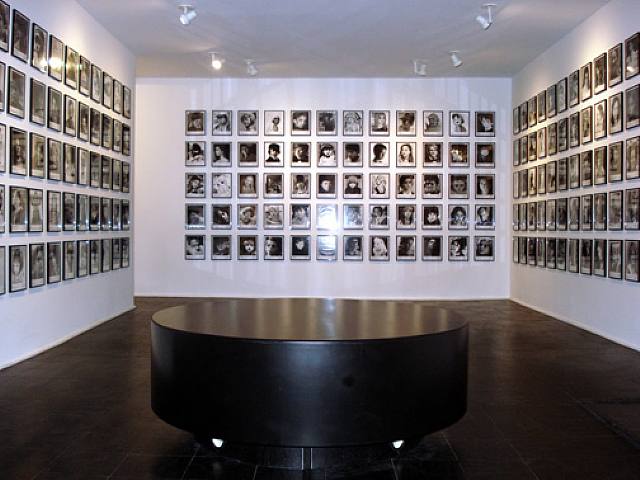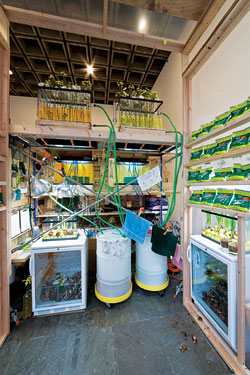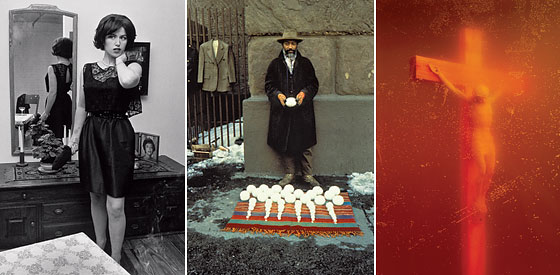
From the Brooklyn Museum's website:
"The most comprehensive retrospective to date of the work of internationally acclaimed Japanese artist Takashi Murakami includes more than ninety works in various media that span the artist’s entire career, installed in more than 18,500 square feet of gallery space.
Born in Tokyo in 1962, Murakami is one of the most influential and acclaimed artists to have emerged from Asia in the late twentieth century, creating a wide-ranging body of work that consciously bridges fine art, design, animation, fashion, and popular culture. He received a Ph.D. from the prestigious Tokyo National University of Fine Arts and Music, where he was trained in the school of traditional Japanese painting known as Nihonga, a nineteenth-century mixture of Western and Eastern styles. However, the prevailing popularity of anime (animation) and manga (comic books) directed his interest toward the art of animation because, as he has said, “it was more representative of modern day Japanese life.” American popular culture in the form of animation, comics, and fashion are among the influences on his work, which includes painting, sculpture, installation, and animation, as well as a wide range of collectibles, multiples, and commercial products.
The exhibition
© MURAKAMI explores the self-reflexive nature of Murakami’s oeuvre by focusing on earlier work produced between 1992 and 2000 in which the artist attempts to explore his own reality through an investigation of branding and identity, as well as through self-portraiture created since 2000. Two works examining these subjects were a part of a group show, My Reality: Contemporary Art and the Culture of Japanese Animation, presented at the Brooklyn Museum in 2001.
Among the works included in this large-scale survey tracing the trajectory of Murakami’s artistic development are many of his acclaimed sculpture figures including the 23-foot-high Tongari-kun (2003–4); Miss Ko2 (1997), a long-legged waitress who has become one of the artist’s signature characters; and Hiropon (1997), a Japanese girl jumping a rope created by milk spurting from her gargantuan breasts. Among the paintings on view will be Tan Tan Bo (2001), as well as Tan Tan Bo Puking—a.k.a. Gero Tan (2002). "




 From the MoMA's website
From the MoMA's website


 The Whitney Biennial, chockablock with bloodless M.F.A. product, is a little too smart for its own good.
The Whitney Biennial, chockablock with bloodless M.F.A. product, is a little too smart for its own good.
 From Jerry Saltz for New York Magazine's 40th Anniversary
From Jerry Saltz for New York Magazine's 40th Anniversary